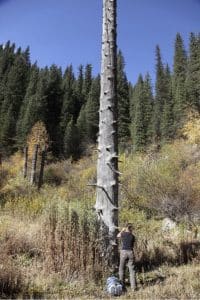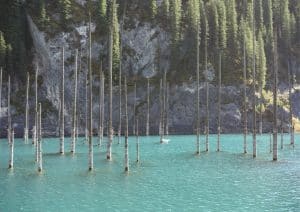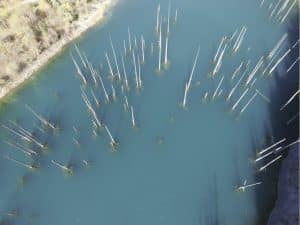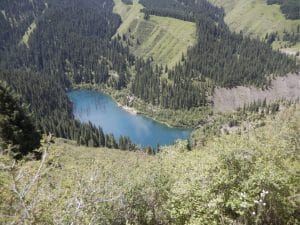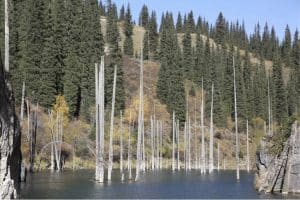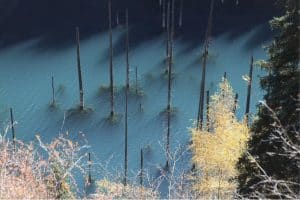Located in the Tien Shan mountain range, in the Kolsai National Park and classified as a biosphere reserve by UNESCO, Lake Kaindy offers a landscape that is as mysterious as it is spectacular, as it is populated by 'ghost' trees.
From its turquoise waters emerge the trunks of spruce trees (Picea schrenkiana) submerged when the lake was formed, which has always aroused the interest of scientists and the wonder of visitors.
Until now, researchers and the local population attributed the formation of the lake to the 1911 earthquake, which caused extensive damage and numerous landslides in the region.
However, a new study by researchers at IMBE and CEREGE has recently challenged this hypothesis, thanks to innovative research based on dendrochronology. This method makes it possible to go back in time by analysing tree rings and thus date past events.
By comparing the tree-ring series of dead trees submerged in the lake with those of living trees on the surrounding slopes, the researchers were able to date the formation of the lake shortly after the autumn of 1888, thereby identifying another culprit: the Chilik earthquake that shook the same region on 11 July 1889, 22 years before the generally accepted date.
With a magnitude of 8.2, this very large earthquake produced a cascading effect, destabilising a slope, causing a landslide, damming the river flowing through the valley and causing the trees to suddenly drown as the lake formed.
The study is not limited to revising the history of this emblematic landscape of Kazakhstan. It also confirms that Lake Kaindy lies in the epicentral zone of the 1889 earthquake and suggests that the surface ruptures described nearby are very probably linked to this event.
By combining dendrochronological analyses with palaeoseismological research, this innovative work has improved our knowledge of the seismic risks in this region, which has been hit by several earthquakes since the end of the 19th century. It has added to our knowledge of the region's natural heritage and contributed to efforts to preserve a unique, fragile and threatened environment.
With the Tien Shan mountain range still seismically active, the scenario highlighted at Lake Kaindy could be repeated, with a chain of natural hazards, but this time in heavily urbanised areas: such a cascading effect would then be likely to produce the greatest material and human losses.
Publication
Miramont, C., Rizza, M., Guibal, F. et al. Tree rings reveal the correlation between the Kaindy Lake submerged forest and the historical 1889 M 8.2 Chilik earthquake (Kazakhstan).
Nat Hazards (2024).
Contact


